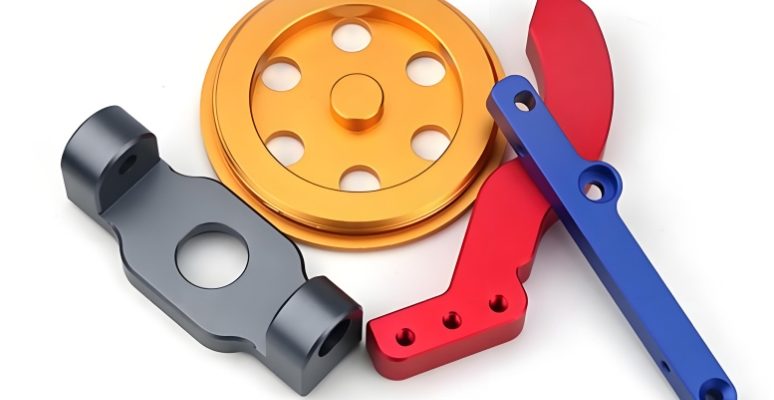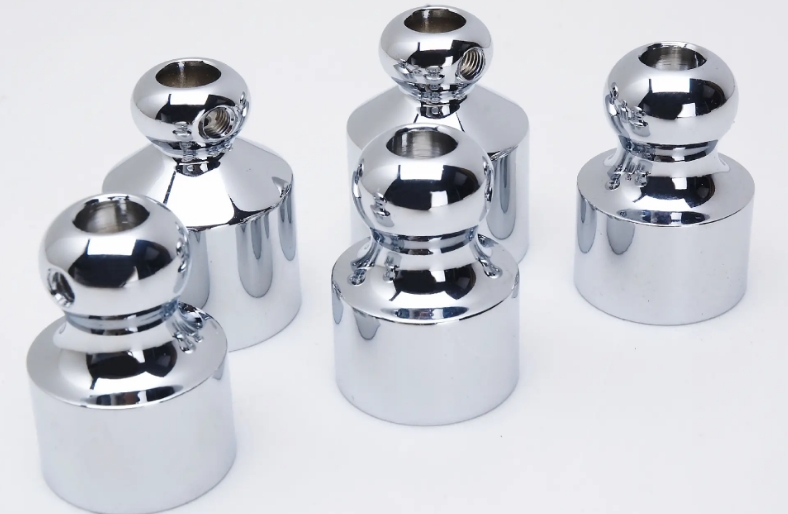What’s the Difference Between Anodizing and Electroplating?
Surface treatment of metal parts plays a crucial role in modern industry. It not only enhances the physical and chemical properties of metal components but also improves their appearance and durability. Among the most common surface treatment processes are anodizing and electroplating. This article explores the principles, features, and selection criteria of these two processes.
1. Anodizing
Anodizing is a process that forms a layer of oxide film on the surface of a metal through chemical or electrochemical methods. This oxide layer significantly improves the metal’s corrosion resistance, wear resistance, and aesthetic appeal.
Types of Anodizing
-
Anodic oxidation:
Mainly applied to aluminum and its alloys, this electrochemical process forms an aluminum oxide layer on the surface. The anodized film is hard, highly insulating, and corrosion-resistant. It is widely used in aerospace, automotive, and electronics. -
Chemical oxidation:
Suitable for iron, copper, and other metals, this method does not require electricity but uses chemical agents to form the oxide layer. The resulting film is thinner than that of anodizing but still offers basic protection.
Advantages of Anodizing
-
Excellent corrosion resistance: The oxide layer acts as a barrier between the metal and the environment.
-
High hardness: Especially for anodized aluminum alloys—the oxide layer approaches the hardness of corundum (aluminum oxide).
-
Good electrical insulation: Anodized films are ideal for electronic components.
-
Strong decorative effect: The surface can be dyed in various colors to meet aesthetic needs.
Disadvantages of Anodizing
-
Limited to specific metals: Primarily effective for aluminum alloys; less effective for steel or copper.
-
Brittle coating: The oxide film is hard but brittle and prone to cracking under heavy impact.
2. Electroplating
Electroplating is the process of depositing a metal or alloy coating on the surface of a substrate through electrolysis. It enhances corrosion resistance, wear resistance, electrical conductivity, and appearance.
Types of Electroplating
-
Zinc plating:
Common for steel parts, providing corrosion protection. Widely used in automotive, construction, and home appliances. -
Nickel plating:
Offers a bright and attractive finish with good wear and corrosion resistance. Applied in electronics, machinery, and decorative applications. -
Chrome plating:
Known for extremely high hardness and wear resistance. Commonly used in automotive parts, tools, and molds. -
Silver and gold plating:
Used in electronic components and jewelry for excellent conductivity and decorative appeal.
Advantages of Electroplating
-
Wide applicability: Suitable for nearly all metals, including steel, copper, and aluminum.
-
Multi-functional: Depending on the coating metal, plating can provide corrosion resistance, conductivity, wear resistance, and more.
-
Excellent decorative finish: Electroplated surfaces are smooth and mirror-like.
Disadvantages of Electroplating
-
Environmental concerns: Electrolyte solutions and wastewater can pose environmental risks if not handled properly.
-
Complex process: Requires multiple steps (pre-treatment, plating, post-treatment), with strict control of each stage.
-
Higher cost: Especially for precious metal plating such as silver or gold.
3. How to Choose Between Anodizing and Electroplating
When choosing a surface treatment process, consider factors like metal type, operating environment, performance requirements, and cost.
Based on Material
-
Aluminum and aluminum alloys: Best treated with anodizing for corrosion resistance and decorative finishes.
-
Steel: Often treated with zinc plating to prevent rust; use chrome plating for higher wear resistance.
-
Copper alloys: Nickel plating is ideal to enhance oxidation resistance and aesthetics.
Based on Application Environment
-
Highly corrosive environments (e.g., marine): Use corrosion-resistant plating like zinc or nickel.
-
High-wear applications: Choose chrome plating for mechanical parts.
-
High aesthetic demands: Use silver or gold plating for electronics or luxury items.
Based on Performance Needs
-
Corrosion resistance: Both anodizing and electroplating enhance this, but their effectiveness varies by metal.
-
Wear resistance: Anodizing for aluminum, chrome plating for steel.
-
Electrical conductivity: Silver and gold plating offer superior performance.
Based on Cost
-
Budget-friendly: Chemical oxidation is low-cost and suitable for less demanding applications.
-
High-performance needs: While more expensive, electroplating offers superior performance for demanding environments.
4. Case Studies
Aerospace Components
Aerospace parts require high corrosion resistance and strength. Anodizing aluminum alloys is commonly used to extend service life and performance.
Automotive Parts
Steel components such as chassis and exhaust systems are often zinc-plated to prevent rust. Decorative elements like emblems or trims are chrome-plated for enhanced appearance and durability.
Electronics
Connectors and terminal contacts are often silver- or gold-plated to ensure excellent conductivity and corrosion resistance.
Conclusion
Anodizing and electroplating are two essential surface treatment processes for metal parts, each with its own strengths and applications. By understanding the principles, advantages, limitations, and use cases of each method, manufacturers can make informed decisions based on material, application environment, performance needs, and cost. Selecting the right surface treatment method can significantly enhance the overall performance and value of metal components in various industries.


